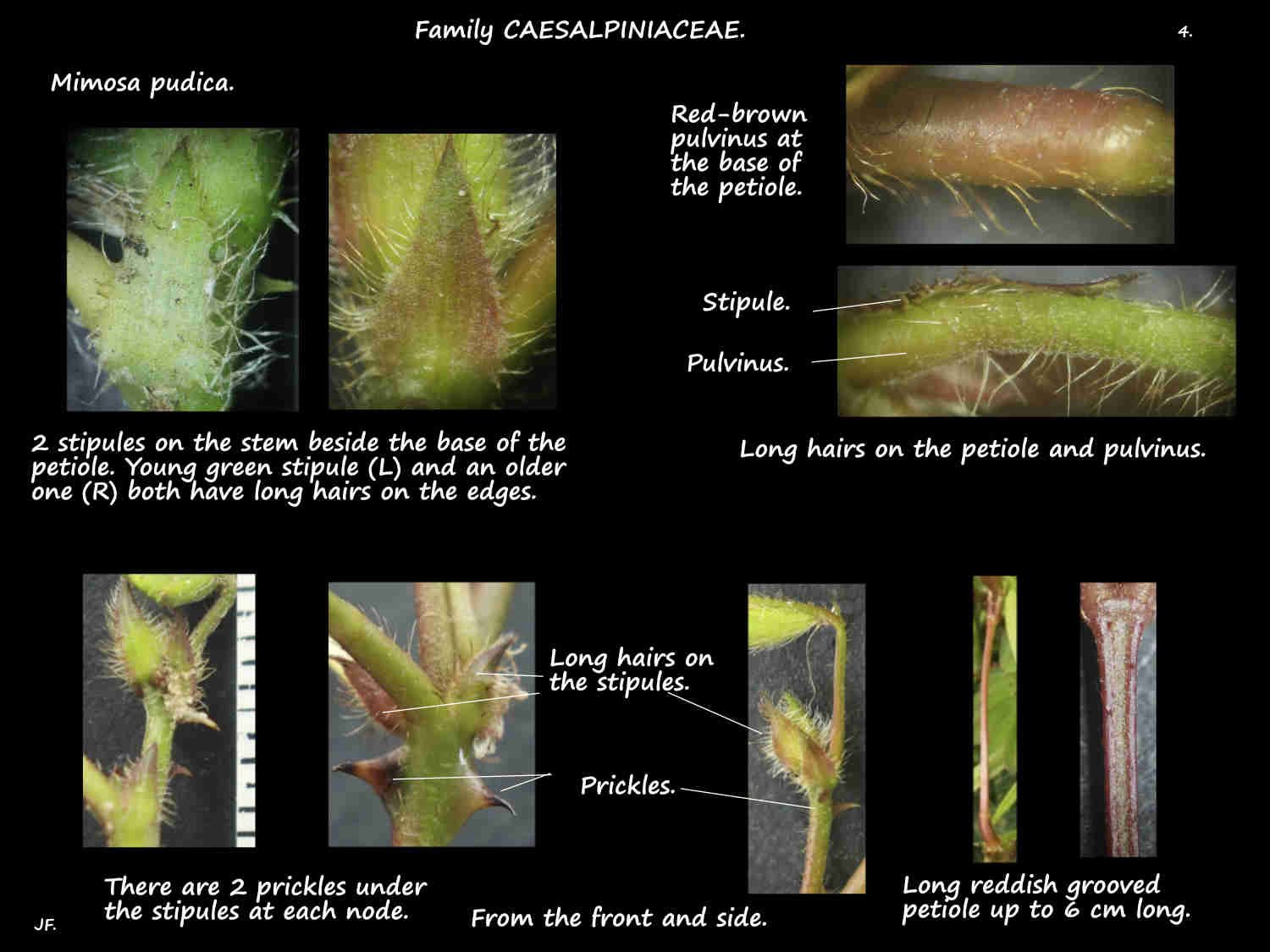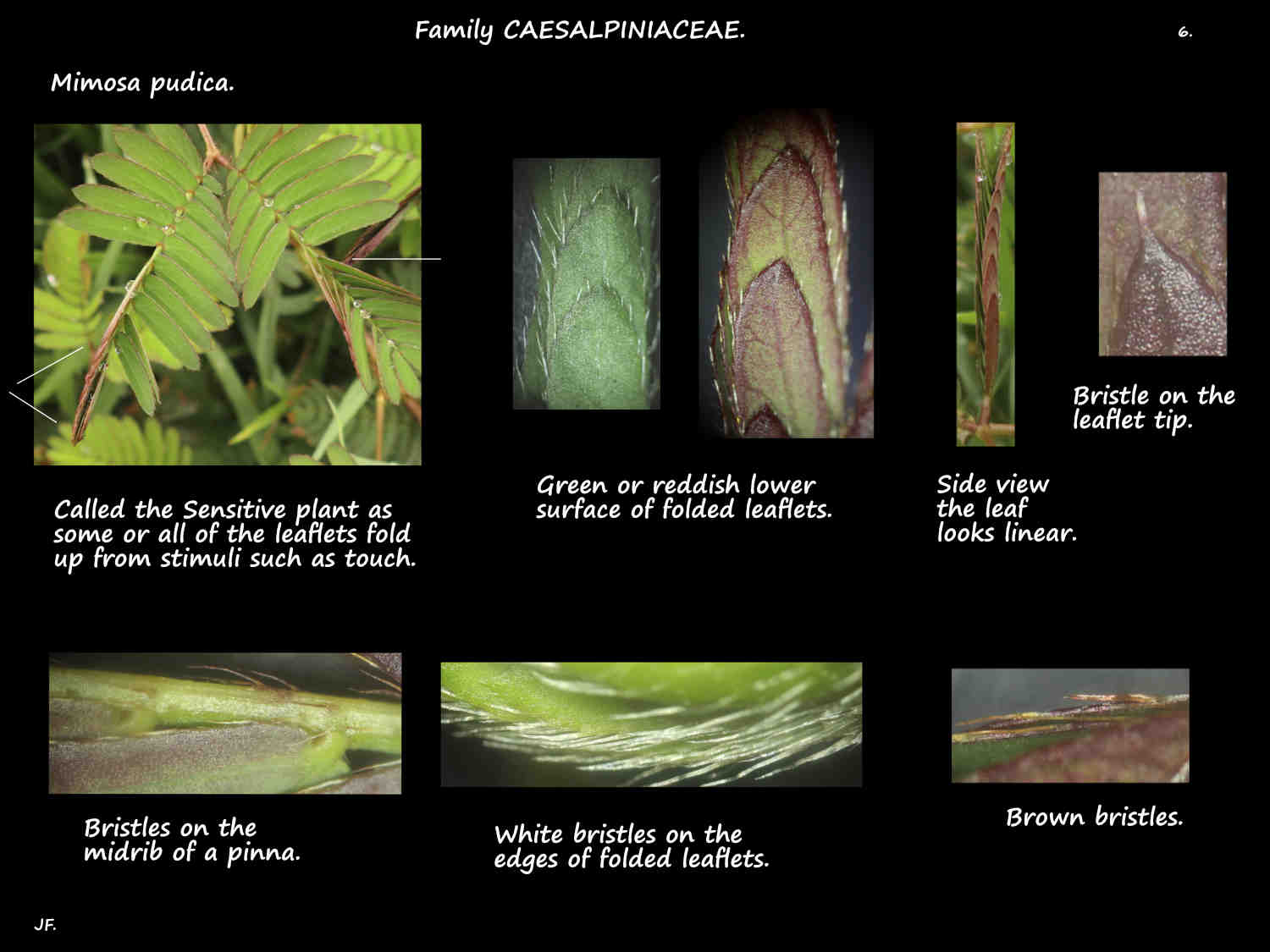Widely naturalised in the coastal areas of northern and eastern Queensland.
The Sensitive plant is an invasive environmental weed in Queensland.
The annual or perennial plants are mostly herbs with some sub-shrubs.
Herbs have branching prostrate stems up to around 60 cm long that root at the nodes.
Erect stems from these can be around 15 to 20 cm high.
With support the sub-shrubs can be up to 1 m high with a woody base.
New stems are reddish while older ones are green or brown.
They may be smooth or have few to many stiff bristles or prickles.
The 1 or 2 prickles below each node (below the stipules) are up to 5 mm long.
The prickles have a wide base and a brown or black tip that curves downwards.
The alternately arranged leaves are on a petiole up to 6 cm long with a grooved upper surface.
It may be smooth or have hairs or even prickles.
The pulvinus at the base that allows the leaf to move usually has hairs on it.
At the base of the petiole are 2 stipules up to around 1 cm long.
There are hairs or bristles on the outer surface.
The bi-pinnate leaves, up to 15 cm long have a midrib or rachis a few mms to 5 cm long.
The grooved rachis has some bristles and occasionally a few prickles.
Branching off the rachis are 1 or 2 (or more) pairs of pinnae 2 to 7 or 8 cm long that may have prickles on the midribs.
Smaller leaves may have the pinnae so close they appear to all come from the end of the rachis.
Larger leaves have the pinnae in opposite pairs along the rachis.
Each pinna commonly has 10 to 25 pairs of narrow leaflets up to 15 mm long.
The oblong leaflets are directly attached to the midrib but they have a small pulvinus.
Around 2 to 5 mm wide they have a rounded tip with a stiff bristle.
The base is asymmetric (oblique) with the lower edge being longer.
There are small forward pointing bristles on the edges and sometimes on the lower (outer) surface.
The leaflets are sensitive to light and other stimuli and fold up quickly.
Axillary inflorescences are an almost spherical head of tiny flowers.
Each leaf axil can have up to 5 or 7 heads.
They are on a peduncle up to 2 to 3 (4) cm long with dense hairs.
The basal bracts are linear.
The midrib of the head up to 1 cm long has a few long hairs on it.
Tightly packed along the midrib are small directly attached flowers.
The narrow bracteole at the base of each flower has 1 to 3 long hairs near the tip.
The 0.2 mm reddish calyx is very difficult to see.
The corolla, around 2 mm long has a tubular base with 4 blunt lobes.
The base is whitish and the pink to red lobes have some hairs on the outer surface.
There are 4 free stamens around 7 mm long.
The pink to mauve filaments hold the tiny anthers well past the corolla.
The superior ovary, around 0.5 mm long has around 4 ovules.
The style, eccentrically attached to the ovary, is around 7 mm long.
After pollination each head develops 1 to numerous pods that stay attached to the head midrib.
The flattened oblong pods are around 25 mm long and 4 mm wide.
Green then pale brown they are constricted between the seeds.
The margins have prickles up to 5 mm long.
When mature they break into segments leaving the thickened sutures intact.
Each segment contains 1 pale brown seed.
There are 5 recognised varieties of which Australia has 3.
M. pudica var. hispida has very dense hairs while the unijuja variety has few.
J.F.











